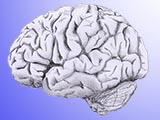It's All in the Brain
Perched as we are on the apex of the food chain, we take comfortable pride in our prowess as rational beings. After all, it was not a natural complement of fearsome claws and fangs that propelled us to that pinnacle, but our brains.
The dismal science tends to think along these lines as well. Our decisions, it has long held, are driven by rational processes — nothing as uncouth as mere instinct or, God forbid, just the way we are wired.
But it so happens that the way we are wired, specifically in the brain, can explain perfectly well why we choose as we do, as Gonzalo Valdés and CESifo fellow Salvador Valdés report in their latest CESifo Working Paper, in another worthy contribution to the nascent field of neuroeconomics—which has already pointed out that, when it comes to economic decision-making, we humans are not that different from other animals.
Economists have always relied on assumptions such as the maximisation principle and preference axioms to explain the way we come to our choices. Messrs Valdés and Valdés, in contrast, derive decision-making behaviour purely from the mechanics of interconnected brain cells and their behaviour as documented by neurological evidence. They find that, under specific conditions, the combined behaviour of brain cells is similar to what an optimising agent would choose.
Neuroscience suggests that the brain makes decisions by following a cycle that starts with the construction of a representation of the problem and the potential actions that can be followed. Later, the potential courses of action are evaluated and one is selected. Finally, the outcome observed after the implementation of the selected action is used to improve the quality of future decisions.
Our researchers designed the architecture of their model to emulate such decision-making cycle, taking the following brain features into account: memory retrieval is a slow process; the brain stores prescribed guides for actions, conceives new situations and remembers past experiences; the brain feels pleasure in a physical and measurable way; possible rewards are played out in the brain before they become realised; and a physical calculation of expected utility is performed in the brain.
Brain cells are filled with an inhibitory substance that acts as a brake that prevents approaching pulses, from other cells or from the outside world, from continuing onto other cells. The amount of this substance decreases at a rate that depends on the amount and nature of the information received, among other things. When the amount of inhibitory substance decreases sufficiently, the cell fires a pulse towards other cells it is connected to. This pulse contains processed information, different information being sent to different cells. For instance, information about the world felt by the senses stimulates representation cells. Once the pulse is sent, the emitting cell fills up immediately with the inhibitory substance.
Thus, a cell is defined at any moment by the information it holds and the amount of inhibitory substance it hoards.
The output of the representation network (current situation, potential actions, possible outcomes and memories) is fed into valuation cells. These, in turn, replay memories, reliving pain or pleasure, and send their assessment, together with a suggested action, to action-selection cells. These “judge” suggested actions in terms of pain and pleasure and send that signal to the central nervous system, which executes the action.
All this can be modelled mathematically. Intriguingly, the analysis of the resulting model shows that although every cell acts independently, the resulting decision-making may be similar to what an optimising agent would choose. Indeed, decision-making is identical to expected utility, if the information travels at the same speed through the brain and does not change during the evaluation period, and if every outcome is evaluated with a consistent criterion based on expected outcomes. When some of these conditions are not met, the model quantifies how decision-making deviates from expected utility.
All in all, then, a biomechanical way of making choices arrives at roughly the same outcome as one based on rational considerations.
The authors make an analogy with a perfectly competitive market, where each agent and firm chooses independently their consumption and production, respectively, and still the market allocates resources as if a maximising agent, a sort of benevolent planner, were present.
Their model, the scholars make sure to point out, is not meant to be accurate and is but a first step to connect choice behaviour to the biology of cells. But boy, does it put a dent on our vaunted self-image as Homo rationalis.
Gonzalo Valdés-Edwards and Salvador Valdés-Prieto: "A Tractable Theory of Choice Based on Cell Behavior", CESifo Working Paper No. 4424


